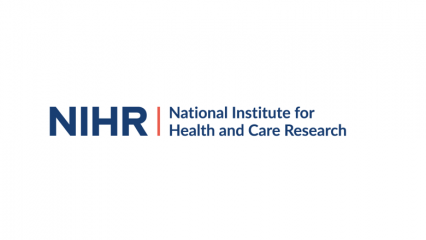The gift of research
Rhodri Evans is a patient currently involved in a peanut allergy study at the NIHR Manchester Clinical Research Facility (CRF) at Wythenshawe Hospital. In his blog Rhodri shares his insight into living with peanut allergy, and how he now believes research is a gift, for himself and for others.
From novelty to nightmare
Up until the age of 11, there was a certain novelty attached to my peanut allergy, as glib as that sounds now. I’d listen to my parents explain to others the blow-by-blow account of my first reaction, and how it had terrified them. Then I’d add something of my own first-hand perspective, just to add to the ‘story’. At school I’d explain to my classmates what I could and couldn’t eat, asking for suggestions like an auctioneer searches for bids from the floor.
However, things began to change when I entered my teenage years. They weren’t angst-ridden years by any stretch of the imagination but the social side of 13 and onwards, the birthday meals out with friends, the going round for tea to a pal’s, it exposed me to the frailty and the vulnerability that comes with living with a serious allergy. Suddenly, a peanut’s capacity to kill me wasn’t amazing and unbelievable – it was real and attached to me like a belt of hand grenades.
When I was 19 I went out for a meal with some colleagues from my weekend job. The restaurant offered to make me a version of one of the dishes without peanuts. While I would usually always bat away such kind offers and opt for something else off the menu, this time I gratefully accepted.
However, after two or three mouthfuls, it was clear it wasn’t peanut-free. I can only speak of my own reactions when exposed to peanut. On this particular occasion, it started off (instantaneously) with a scratchy tightness in my throat, accompanied with the symptoms you’d expect to have at the peak of a nasty cold or a hay fever attack – a severely blocked or runny nose, watering eyes, hives, a tingling sensation akin to prickly heat on the face, a rapid heartbeat coupled with a serious shortness of breath. Anxiety often comes into play too, especially if the attack is a public one. However, I insisted I was fine: “Honestly, I know how to handle it.” Living with it had made me blasé, when I really shouldn’t have been. That night, instead of phoning an ambulance (I had never been prescribed meds for my allergy – never), I took a taxi to the hospital. Seeing me look and talk like a punch-drunk boxer, getting increasingly worse, I must’ve put the fear of god into that driver. He practically threw me out of the car as if I was some gangster shot in the abdomen, before speeding off to a far less dramatic job.
Taking action
I spent that night in hospital, rigged up to tubes and cables. My now wife was terrified to see me that way. It was pretty early on in our relationship, so all the more bewildering for her. I went home the next day, thinking I’d do something about my allergy but, as is so often the case with resolutions, I didn’t and the idea soon faded away into the old acceptance of ‘one’s lot’. It was a full decade later, after explaining my peanut allergy to new colleagues for the umpteenth time that I finally decided to take action.
I searched ‘peanut allergy trials UK,’ online. Discovering trials were taking place in Manchester and that they were accepting new subjects, I fired off an email expressing my interest.
What this research means to me
And so, since the end of summer 2016, I’ve been visiting Manchester CRF at Wythenshawe Hospital at regular intervals to take part in the PALISADE trial.
The aim of the study is to learn if taking small doses of the drug AR101 and increasing the dose over time, can help patients slowly build up tolerance to peanuts. It’s a method that’s had a fair bit of coverage of late, especially – and hearteningly so – in the context of treating children who have allergies.
Getting to Manchester CRF meant catching the train in my North-West Wales hometown at 6am. However, I never saw it as a chore.
I was benefitting from the visits, naturally but, I also got to know a lot of the ward staff and bonded with them to such an extent that I actually looked forward to visiting.
This is something I cannot stress deeply enough – they are a wonderful bunch of people and their care for patients like myself has been nothing short of extraordinary. This isn’t an exaggeration – they really do go above and beyond to make these visits as pleasurable as they can be.
Early on, when I happened to mention my involvement in the trial with friends or colleagues, many of them said that I was ‘doing a good thing’. I’ll be honest, during that first year of working through the doses, I thought of nobody but me and the potential benefits it could bring to my life. But then, as I became more involved in the various stages of research and as I saw yet another story on the news about a child dying as a result of an allergic reaction, I did start to re-evaluate my reasons for being involved. I’m now a father to two young children and that has made me think back to my own parents witnessing their first-born experiencing an allergic reaction.
So, if my involvement in this trial helps to counter these horrific scenarios in any way and gives others the chance to beat their allergies, then I’ll gladly sign up for the duration.
It’s vital that solutions are found to these problems. That means the research must be conducted and volunteers are needed. Based on the impeccable care and support I continue to receive from the staff at Manchester CRF, I urge anybody thinking about taking part in trials to do so.
Regardless of motivation, participation in a trial could – literally – help in saving lives. The research conducted today offers the gift of a solution tomorrow.




